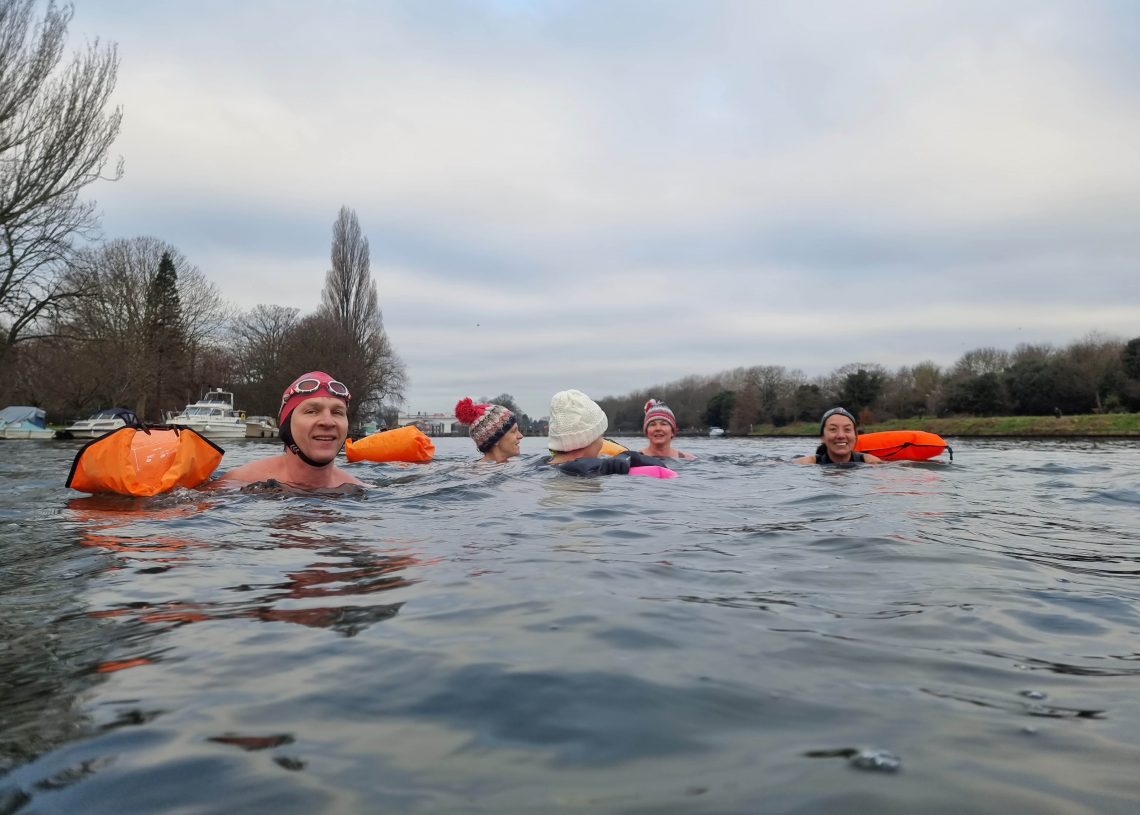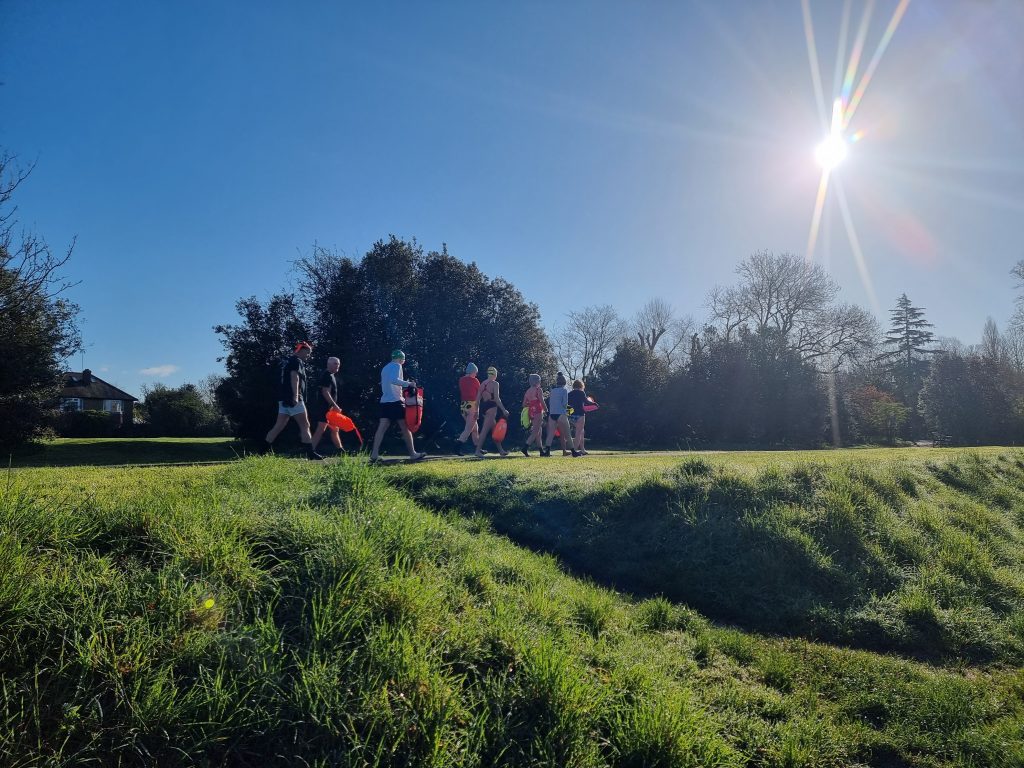
The importance of a swimming community
Simon Griffiths reflects on what makes swimming communities special, and how you can make them even better.
As swimmers, we often see each other ungroomed, whether that’s in a skin-tight costume with bedraggled hair or wrapped, shivering, under multiple unshapely layers. Swimming also exposes us in many other ways. My swimming pals have seen (and tolerated) me being grumpy in training sessions and frustrated with injuries. They’ve been with me to celebrate swimming successes and are there to tell me to get a grip when a swim hasn’t gone as well as I hoped or wanted. They’ve bundled me up and rewarmed me when I’ve gotten too cold and shared their food when I’ve forgotten to bring my own. They’ve watched me push myself to exhaustion, raced against me both in training and at events, and joined me for relaxing summer swims in the Thames. They got up in the middle of the night and travelled for hours to join me on swimming adventures.
I suspect many of you have similar experiences with your own swimming groups. We get to know our swimming friends unusually well. Swimming reveals our vulnerabilities as well as our strengths. There are times we depend on each other for our safety and need to trust we will look out for each other.

Our swimming communities overlap. I’m a member of a masters swimming club, which is a relatively formal community. Less formally, I swim in the Thames with a group organised through WhatsApp. Some of those swimmers also swim with my club. There are other swimming groups in the area. I’m not on their WhatsApp groups but if we happen to be at the river at the same time, we will swim together. Even less structured is the community of swimmers I connect with around the world through social media. Some of these, I occasionally meet at events. Others, I know, would welcome me for a swim if I turned up suddenly, as I would do for them.
Form a bubble
Swimming communities can also form, temporarily, like bubbles. Last year I was in Turkey with AquaMasters. I took part in a series of swims over consecutive weekends. When I arrived, I didn’t know anyone. When I left, I felt like I was parting with old friends. Despite our language and cultural differences, we were united by our love of swimming. As a swimmer, it feels natural to fit in with other swimming communities wherever you are.
But swimming communities, wonderful as they are, don’t just happen. Swimming clubs need volunteers to run them, WhatsApp groups need people to welcome new members and coordinate swim times. Even informal groups benefit when someone turns up with cake. Ask yourself what you can do to enhance your swimming communities. Even small gestures make a difference. Could you be the person who always carries a spare pair of goggles or a tow float? Could you swim next to the nervous first-timer while they build their confidence? Can you keep an eye on your fellow swimmers to ensure nobody feels left out?
And finally, could you do us a favour, and let all your fellow swimmers know there’s a magazine that celebrates swimming communities around the world and is dedicated to helping swimmers make the most of the water, and encourage them to sign up.








